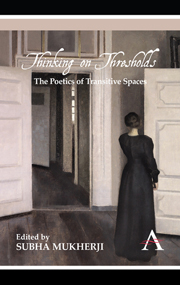Book contents
- Frontmatter
- ACKNOWLEDGEMENTS
- Contents
- List of Illustrations
- Notes on Contributors
- Introduction
- Part One Doors, Windows, Entries
- Part Two Lives and Narratives, Territories and Worlds
- Part Three Matter, Mind, Psyche
- 9 ‘Remember Me’
- 10 Between Sleep and Waking: Montaigne, Keats and Proust
- Part Four Reading, Writing, Playing, Listening
- Select Bibliography (including Discography)
10 - Between Sleep and Waking: Montaigne, Keats and Proust
from Part Three - Matter, Mind, Psyche
Published online by Cambridge University Press: 05 March 2012
- Frontmatter
- ACKNOWLEDGEMENTS
- Contents
- List of Illustrations
- Notes on Contributors
- Introduction
- Part One Doors, Windows, Entries
- Part Two Lives and Narratives, Territories and Worlds
- Part Three Matter, Mind, Psyche
- 9 ‘Remember Me’
- 10 Between Sleep and Waking: Montaigne, Keats and Proust
- Part Four Reading, Writing, Playing, Listening
- Select Bibliography (including Discography)
Summary
This brief essay emerges from an ongoing study of relations between imaginative writing and liminal states or movements of consciousness, especially those on the threshold between waking and sleep, or between consciousness and its loss or inhibition. In the examples considered here, such writing is meditative and self-reflective, and brings the first person into the centre of its concern. Its literary realisation is as both product and process, involving transitions between consciousness and its absence, between waking and sleep, between everyday consciousness and an obscure consciousness of the night. It may include dreaming but also less defined, more intermediate mental activities and phenomena brought under the term ‘hypnagogia’, a leading towards or away from sleep proper. Falling asleep and waking up, ‘dropping off’ and ‘coming to’ – movements into or out of unconsciousness, lapses, syncopes and myoclonic episodes, losses and recoveries of consciousness, consciousness expressed through musing and dreaming, partial, drifting thought or imagination, rhythmicities and fluctuations of consciousness: these are the experiences and phenomena I'm trying to probe, as they are reflected and articulated in literature. Finding versions of these movements in a range of literary kinds and forms, my concern is to explore possible relations between them and the activity of the creative imagination. Also crucial for the three very different examples discussed here, is the question of the self's or first person's status and persistence during such movements away from full consciousness, clarity, and wakefulness.
- Type
- Chapter
- Information
- Thinking on ThresholdsThe Poetics of Transitive Spaces, pp. 141 - 154Publisher: Anthem PressPrint publication year: 2011



